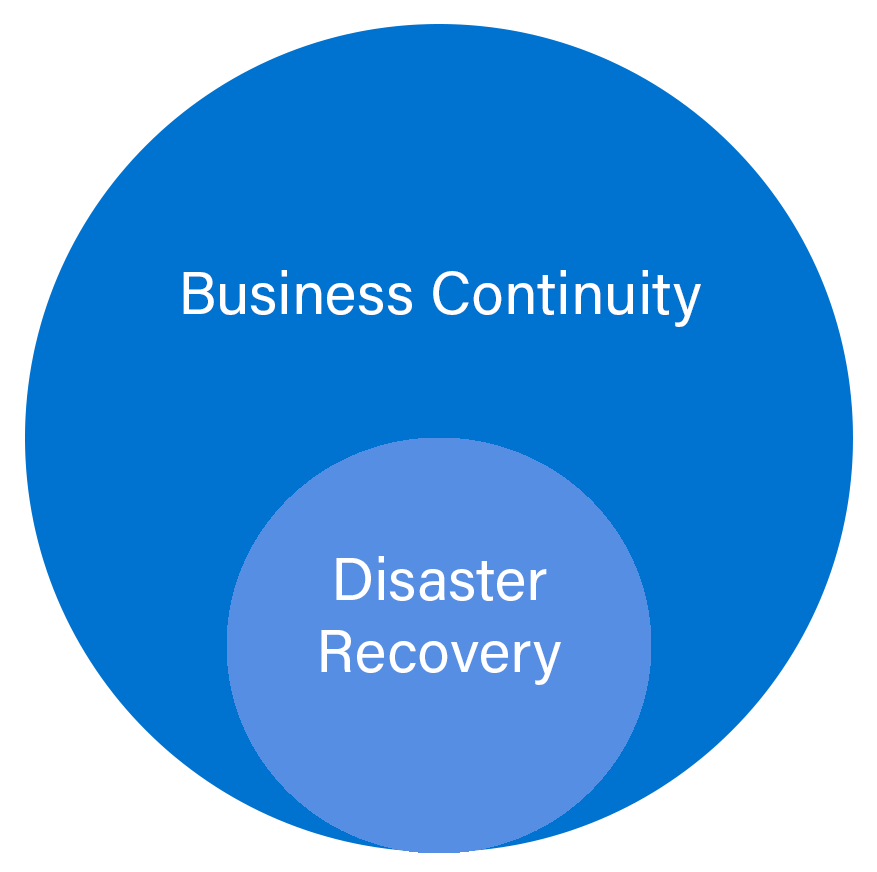
Data Resilience and IT Resilience: The Foundation for BC/DR Success
We’ve blogged before about the importance of business continuity and disaster recovery planning and execution. What we haven’t talked about is IT resilience, a proactive approach that rolls data resilience into business continuity strategies as IT deployments grow more expansive and complex.
It’s easy to get confused by multiple terms that seem to mean the same thing. So, let’s spend a moment discussing the nuances defining data resilience and how, along with business continuity and incorporated into disaster recovery planning, it fits into the larger concept of overall IT resilience.
What is Data Resilience?
When specifically talking about data resilience, we’re describing the state of affairs in which an organization’s data in storage, in use and in transit is strategically managed and protected so that it is always available to authorized individuals within organizations – intact, up-to-date, and free of corruption. This is especially important in the case of unexpected disruptions caused by natural disasters, infrastructure failures such as power outages, computing equipment failures, human errors or cyberattacks.

Data resilience should be a component of every organization’s DR strategy and plans. An effective data resilience strategy needs to be designed and implemented to guarantee continuous access to all data, from a single file to large data sets. To achieve this degree of availability, organizations must incorporate multiple actions into their planning. These include:
- Establishing redundant data storage locations, so if one storage facility is affected by an adverse event, authorized users and applications can access that data from another remote, unaffected location that is provisioned with redundant data servers.
- Performing regular data backups across all data storage locations (including remote data centers and cloud storage facilities). Ideally, for the most business-critical data, backups are made in real-time. For less critical data, asynchronous data replication to backup locations and servers can be employed.
- Encrypting data when in use, in transit and in storage to protect it against cyberattacks.
What is IT Resilience?
While “resilience” is the watchword of the day, it doesn’t mean that business continuity (BC) or disaster recovery (DR) are no longer relevant. In fact, IT and business resilience depend on the creation, implementation and continual review and testing of BC and DR plans (increasingly combined and referred to as BCDR). The National Institute of Standards and Technology’s Computer Security Resource Center provides three BCDR definitions that are specific to information systems:
- The ability of an information system to continue to: (i) operate under adverse conditions or stress, even if in a degraded or debilitated state, while maintaining essential operational capabilities; and (ii) recover to an effective operational posture in a time frame consistent with mission needs.
- The ability of an information system to continue to operate while under attack, even if in a degraded or debilitated state, and to rapidly recover operational capabilities for essential functions after a successful attack.
- The ability to quickly adapt and recover from any known or unknown changes to the environment through holistic implementation of risk management, contingency and continuity planning.
These definitions reflect the strategic state of constant availability of your applications and data and consistently blazing fast connectivity. Reaching and maintaining this state, so that your IT enterprise and infrastructure can resist and/or weather natural disasters and other types of operational threats, is the result of comprehensive, properly implemented, tested and communicated BC and DR plans.
What is Business Continuity?
BC plans are designed to enable organizations to operate if power or equipment fails, or even if there is a catastrophic event at or near the data center. Typically, the cornerstone of BC plans is real-time monitoring that can trigger immediate failovers to backup power generators, servers, alternate networks and other equipment either within the data center or at unaffected locations. Failover measures continue for the duration of the disruption.
These plans also include provisions for protecting employees and providing alternate work locations and communication channels. Ideally, disruptions will go unnoticed by customers and business partners.

What is Disaster Recovery?
DR plans are designed to kick in following business-threatening events. They are focused on returning operations to normal by restoring primary power, repairing or replacing damaged equipment, reestablishing connectivity and recovering data – including operational and transactional data as well as data used for business intelligence, machine learning, AI and other purposes. The success of DR hinges on IT redundancies and backups. Depending on the severity of the incident, DR can take hours, days or longer.
These days, BC and DR are viewed as complementary and essential best practice capabilities. Created and implemented properly, they should enable businesses to withstand and recover from virtually any adverse event, including certain force majeure catastrophes that can include everything from unprecedented natural disasters to armed conflicts and other cataclysmic events considered beyond a company’s control.
It’s important to particularly factor data resilience into DR plans as data is to an extremely large extent the fuel organizations rely on to power and sustain their very existence. Lost, corrupted or otherwise inaccessible data, whether permanently or for an extended period of time, represents an existential threat to any affected business.
Colocation: The Smart Option to Achieving Data Resilience and IT Resilience
As you strive to achieve data resilience and IT resilience, carefully consider where you deploy IT assets. It’s a well-documented fact that on-premises data centers are far more vulnerable to business crippling events than purpose-built colocation facilities.
For instance, consider the unprecedented February 2021 winter storms that pummeled Texas with historically low temperatures, snow and ice, overwhelming the state’s power grid. As reported in smartindustry.com, “4 million reported power outages wreaked havoc on businesses and IT systems.” Businesses whose IT assets were deployed in colocation facilities fared far better in terms of their ability to continue operating.
While the Texas power crisis was exceptional, it doesn’t take Mother Nature on the rampage to cause serious business interruptions. Human errors, such as misconfiguring software installations or upgrades, network equipment failures or malware attacks, can negatively impact business operations or worse, bring them to a grinding halt. Even seemingly minor incidents such as power lines being cut by construction equipment or communications lines or cell towers being brought down by vehicular crashes can trigger a crisis if an organization has not implemented BCDR plans.
Engaging a colocation partner such as CoreSite can increase your organization’s level of resiliency by providing robust facilities and redundant infrastructure systems that are designed from the ground up to keep business operations running. Clients can focus on core business functions rather than on managing a data center.
CoreSite colocation provides a high-performance environment for your critical IT infrastructure. Our colocation facilities offer dedicated, private connection options to an outstanding digital ecosystem of network operators, cloud providers and other service providers. Together, these capabilities help ensure the continuous functioning and availability of your applications, while protecting your data and safeguarding your IT enterprise from cyberattacks and other operational threats.
With 30 data centers located across 11 key U.S. markets, they provide the geo-diversity that enables customers to failover to and recover from locations not affected by regional disasters and outages. Our colocation facilities are also staffed 24/7/365 by highly trained operations technicians who provide technical operations tasks and incident resolution.
Know More
Schedule a tour of a CoreSite data center near you! There’s no better way to learn more about how we can support data resilience, IT resilience and your business.










